Description
Overall Architecture
The following diagram shows the overall architecture of a network, including computers running COMSOL Multiphysics, COMSOL Multiphysics Server, COMSOL Client, compiled COMSOL apps; external mobile devices or web browsers running COMSOL apps; COMSOL Server nodes; Model Manager Server; FlexNet license server; database server; and an HPC cluster with computation nodes running COMSOL batch jobs.
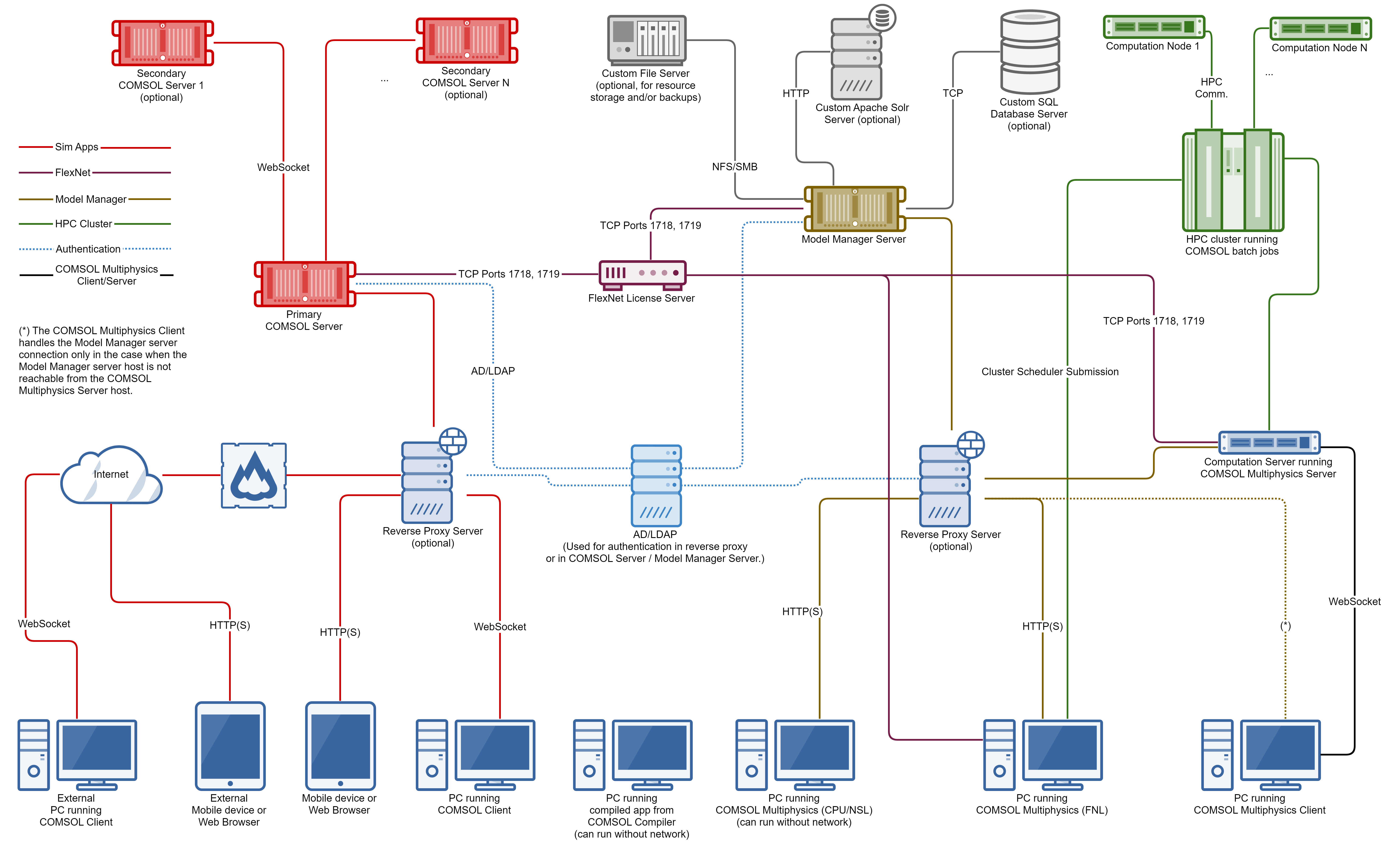
Running COMSOL Multiphysics in Client–Server Mode
The COMSOL Multiphysics client and server applications are available on all platforms.
Running COMSOL Multiphysics in Client–server Mode on the Same Computer
The COMSOL Multiphysics client and the COMSOL Multiphysics server can run on the same computer and with all available license types: named single user license (NSL), CPU-locked license (CPU), and floating network license (FNL). In this configuration, the COMSOL Multiphysics client and the COMSOL Multiphysics server run as separate processes within a single computer. The client and server communicate through a local TCP (Transmission Control Protocol) connection.
Running COMSOL Multiphysics in Client–server Mode on Different Computers
The COMSOL Multiphysics client and COMSOL Multiphysics server can also run on different computers. This configuration requires a floating network license (FNL).
The diagram below illustrates the client–server TCP connection between different computers and TCP connections to the default ports 1718 and 1719 for the license server. (A license server is required for the FNL license.) The diagram also illustrates that the COMSOL Multiphysics server can submit batch jobs to a HPC cluster. Typically, a separate network is used for the communication between the compute nodes and the head node.
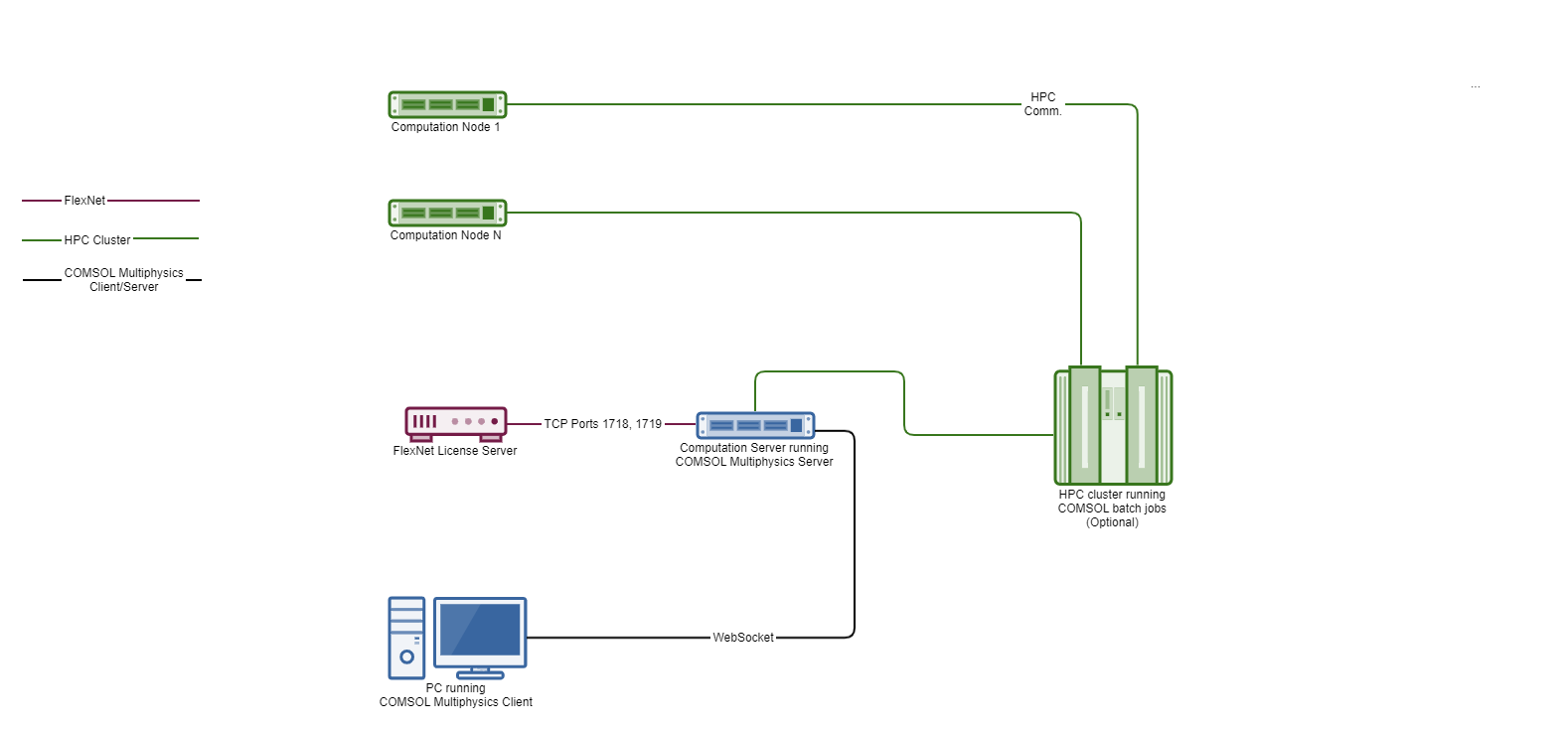
Running a COMSOL Model Manager Server and Client
The following diagram shows how the COMSOL Model Manager Server can be connected to a computer running COMSOL Multiphysics, to a FlexNet license server, and to optional SQL database severs and custom file servers.
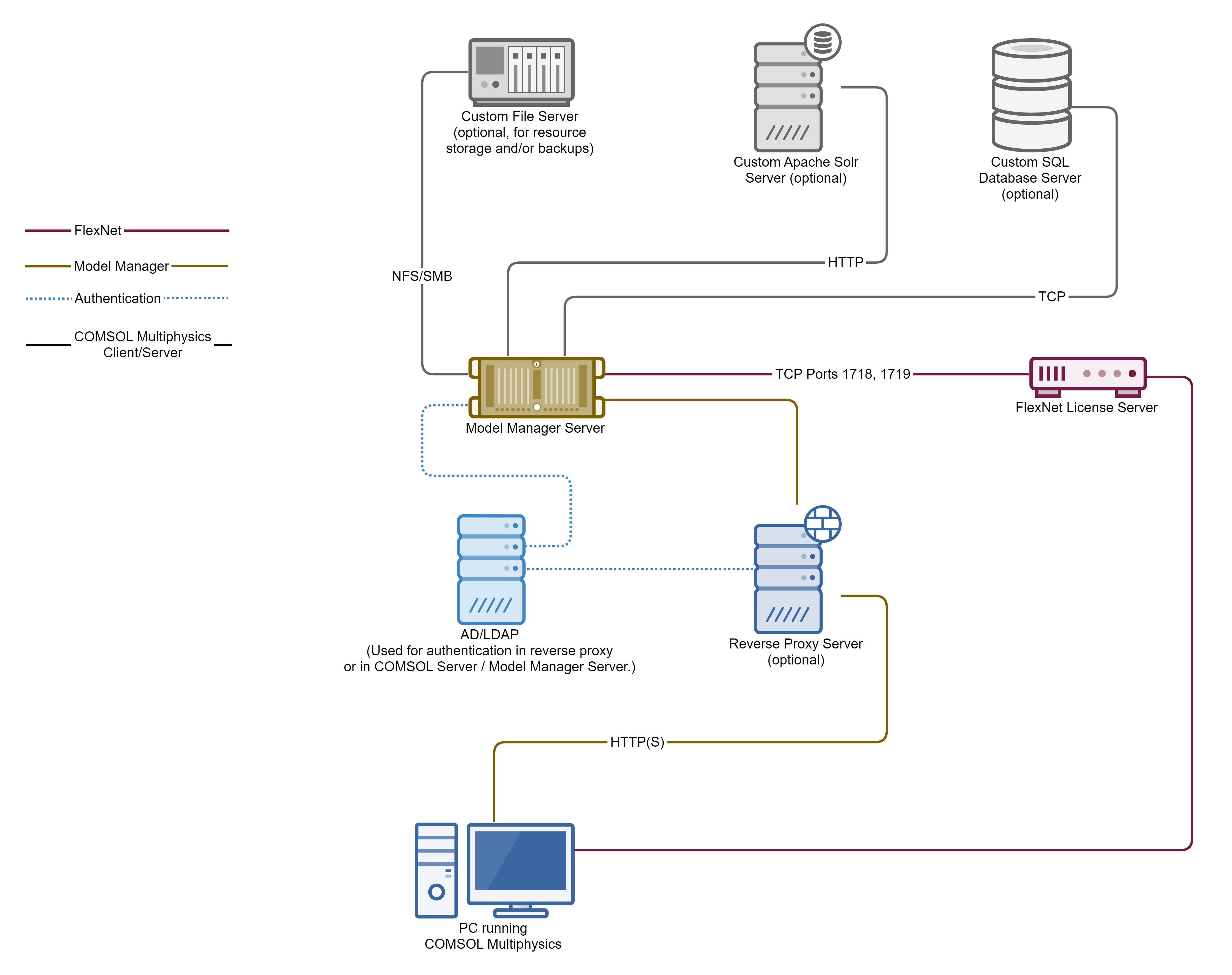
The diagram shows the setup for running COMSOL Multiphysics to a Model Manager server through a reverse proxy server. This configuration is useful for managing a corporate website a common login for the Model Manager server and other web-based tools in a corporate environment. The Model Manager can also manage its own logins through an AD or LDAP server. Running the Model Manager server in this way requires a license server and at least one FNL license. When using an FNL license for COMSOL Multiphysics, you also need to communicate with the license server from COMSOL Multiphysics. When using a CPU or NSL license, you typically use a local license server or a license file. The Model Manager server can use local storage and a local database but can optionally communicate with separate database servers and a separate custom Apache Solr server, and use a separate server for backup and storage.
The following diagram shows a COMSOL Model Manager Server connected to a COMSOL Multiphysics client-server setup:
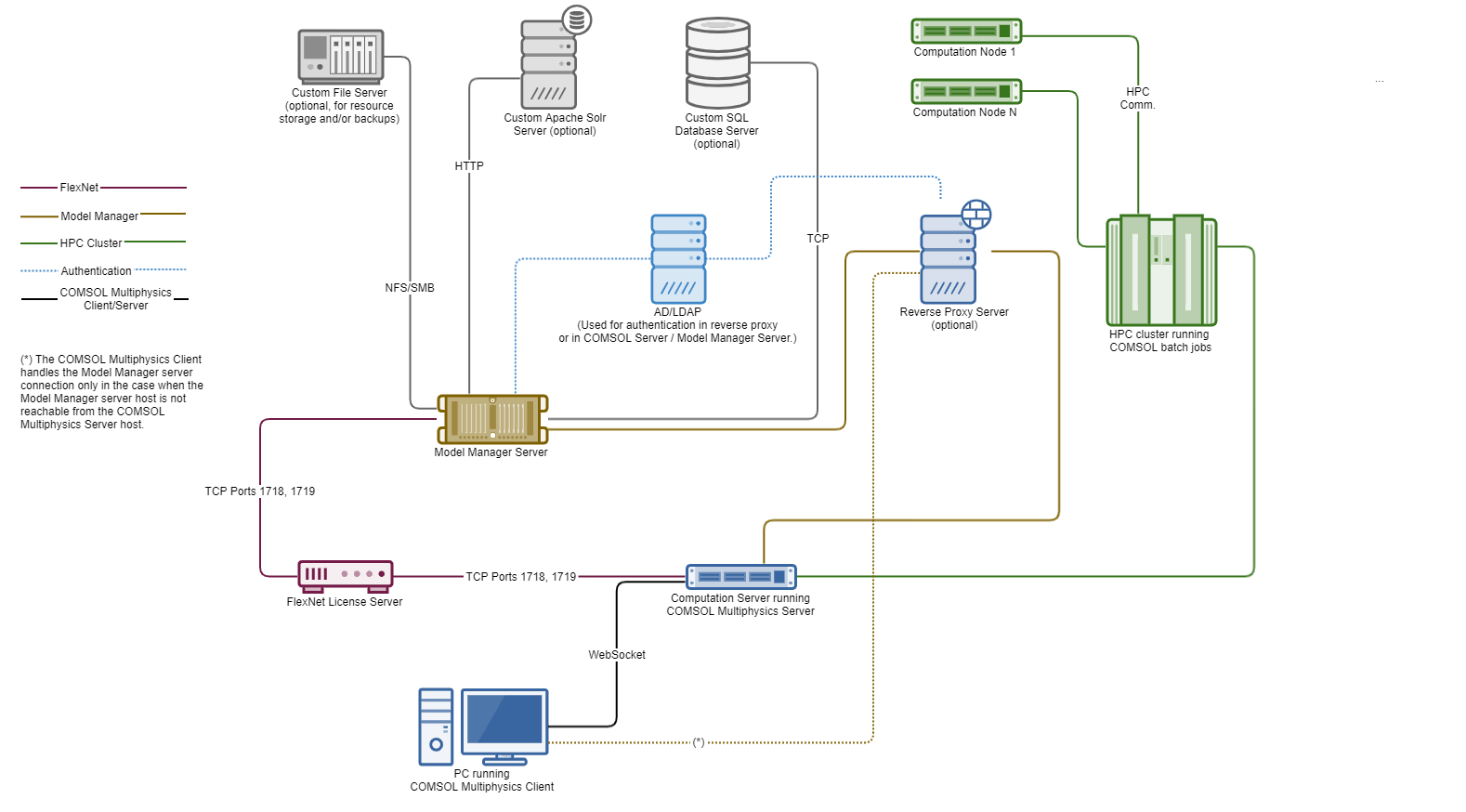
The diagram shows a setup with where you run COMSOL Multiphysics client and COMSOL Multiphysics server on separate computers. This configuration requires an FNL license. Both the COMSOL Multiphysics server and the Model Manager server communicate with the license server. The diagram shows the optional reverse proxy server with communicating with an AD or LDAP user database server. (The Model Manager server can manage logins through AD or LDAP itself.) This figure also shows an optional HPC cluster as well as optional storage servers, database server, and a custom Apache Solr server.
Running COMSOL with MATLAB, Simulink, or Excel
COMSOL can run together with MATLAB, Simulink, or Excel on the same machine using the client–server architecture. The command comsol mphserver matlab launches this configuration. The command comsol matlab can be used to launch just the client and to connect to a remote server. Excel launches a COMSOL Multiphysics server when you open a model. The diagram below shows computers running MATLAB and Simulink, Excel, and the COMSOL Java API, and how they are connected to a COMSOL Multiphysics Server, a FlexNet license server, and an optional HPC cluster running COMSOL batch jobs.
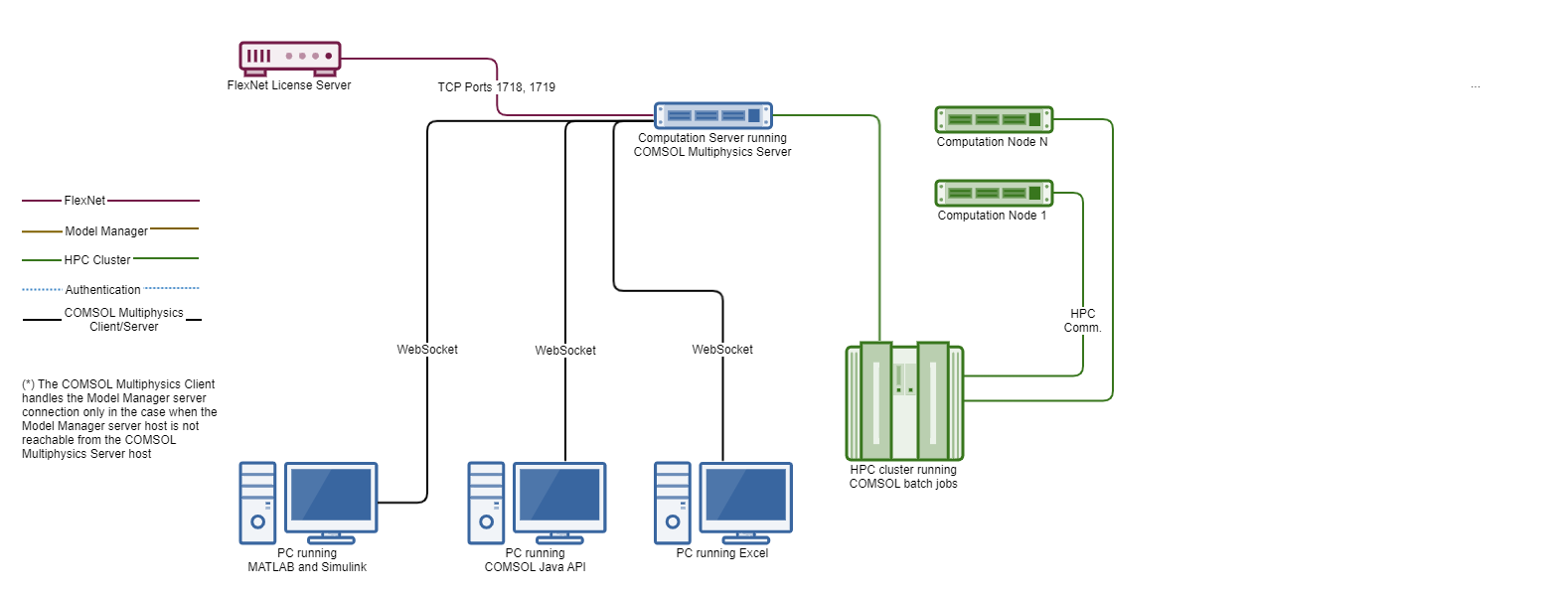
COMSOL makes every reasonable effort to verify the information you view on this page. Resources and documents are provided for your information only, and COMSOL makes no explicit or implied claims to their validity. COMSOL does not assume any legal liability for the accuracy of the data disclosed. Any trademarks referenced in this document are the property of their respective owners. Consult your product manuals for complete trademark details.
